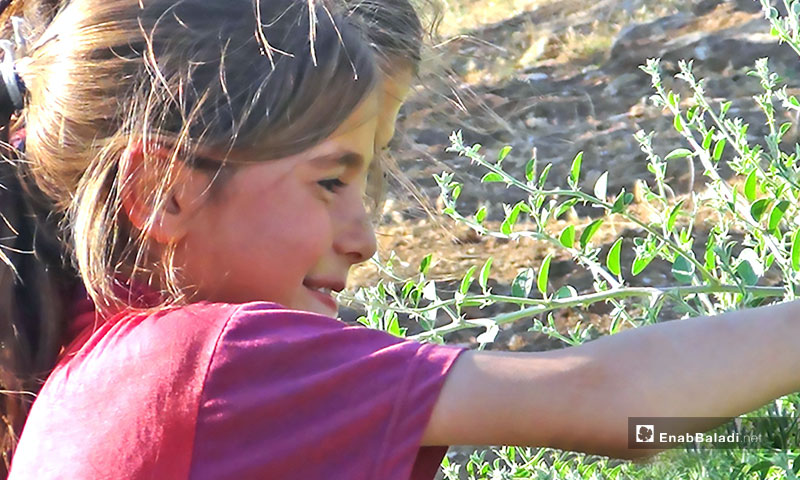Searching for a means to make a living, in addition to medical and financial benefits, the people in the northern countryside of Hama work in the fields of “caper.” They pick the crops with the aim to sell it as both food material and a medicine. However, to do this they are forced to face the mortar shells that make the crops difficult to reach, as if the spikes of the plant do not inflict enough pain on the harvesters.
The harvesting seasons begins in summer, while the plant spreads in the mountain areas, known for being rigid and forsaken. The pickers usually suffer the dangers of reaching its filed and the thorny weapon covering the plant’s surface.
“Caper” is a wild thorny bush, with multiple branches and a white flower which heat turns in to a fruit that resembles figs in its shape. The fruit is used in the manufacture of a number of medicines and various dishes.
Seasonal Source of Living
“Caper” is considered a seasonal source of living for the people in rural Hama, after it was viewed as a useless thorny plant 20 years ago. Nonetheless, the great demand on caper in the past a few years, triggered people to picking it, seeking its remedial effects and to be imported to other countries.
The people pick the fruits and sell them for about 700 to thousand Syrian pounds per kilogram, despite the fact that such a price is way too low if compared to the soaring prices of other products. But poverty and people’s loss of most of their belongings and sources of living in the shadow of war and displacement forced them to count on this plant and to seek its fruits.
Attacks Worry the Pickers
“Abu Musaab,” who works in a Military Observatory, monitoring air raids and mortar shells, said that the Syrian regime’s bombardment of areas in rural Hama turned the profession of picking caper into massive a risk, for the area is a target for constant shelling. The plant is mostly focused in areas close to checkpoints, and the process of picking it is already exhausting for it takes a lot of efforts to reach its fields, located in rigid areas, on the one hand, and it painful to pick due to its thorny nature on the other hand.
He added that people have been paying their life as a price, for artillery shelling has led to the death of three workers and the injury of seven others from the village of Lahaya, northern Hama, two weeks ago.
Fawaz al-Ramah, accompanied by his family, takes a long journey on his motorbike to pick the fruits. He explained that usually they face such a hard time picking it, because they are targets for shelling from the checkpoints that are located near the fields where they work, in addition to the landmines and cluster bombs that proliferate in the northern countryside of Hama. He described the trade saying: “it is bread soaked in blood.”
Al-Ramah complained about the little financial returns despite the mission’s difficulty, attributing this to the merchants’ tendency to exploit the people’s dire needs by imposing prices that are nothing if compared to the harvest’s value.
Medical Usage
“Caper’s” medical importance relates to its richness with effective components used in the medicine industry and some cosmetics, as doctor Salem al-Sayed has told Enab Baladi.
As a herb, the plant is used as a cure for several illnesses, including disk, diabetes, ear infections, diarrhea, rheumatism, gout, hemorrhoids and dialysis. It is considered a disinfectant for intestines and stomach and is used as a pain killer and an aphrodisiac.
“Caper” contains chemical materials such as glucoside, protein, acids and enzymes, as well as a group of sugars, oils, soap-related, gelatinous and greasy substances, according to al-Sayed, who said that the “wild” honey, extracted from its flowers, is the best and most useful honey among other types.
In terms of food, the plant is considered an appetizer and a type of spices and flavors used in the preparation of meat. The plant is socked in water for a certain time, then it is used for making salads, that are served with olives and other herbs. It is also made into “pickles” after adding salt to it.

